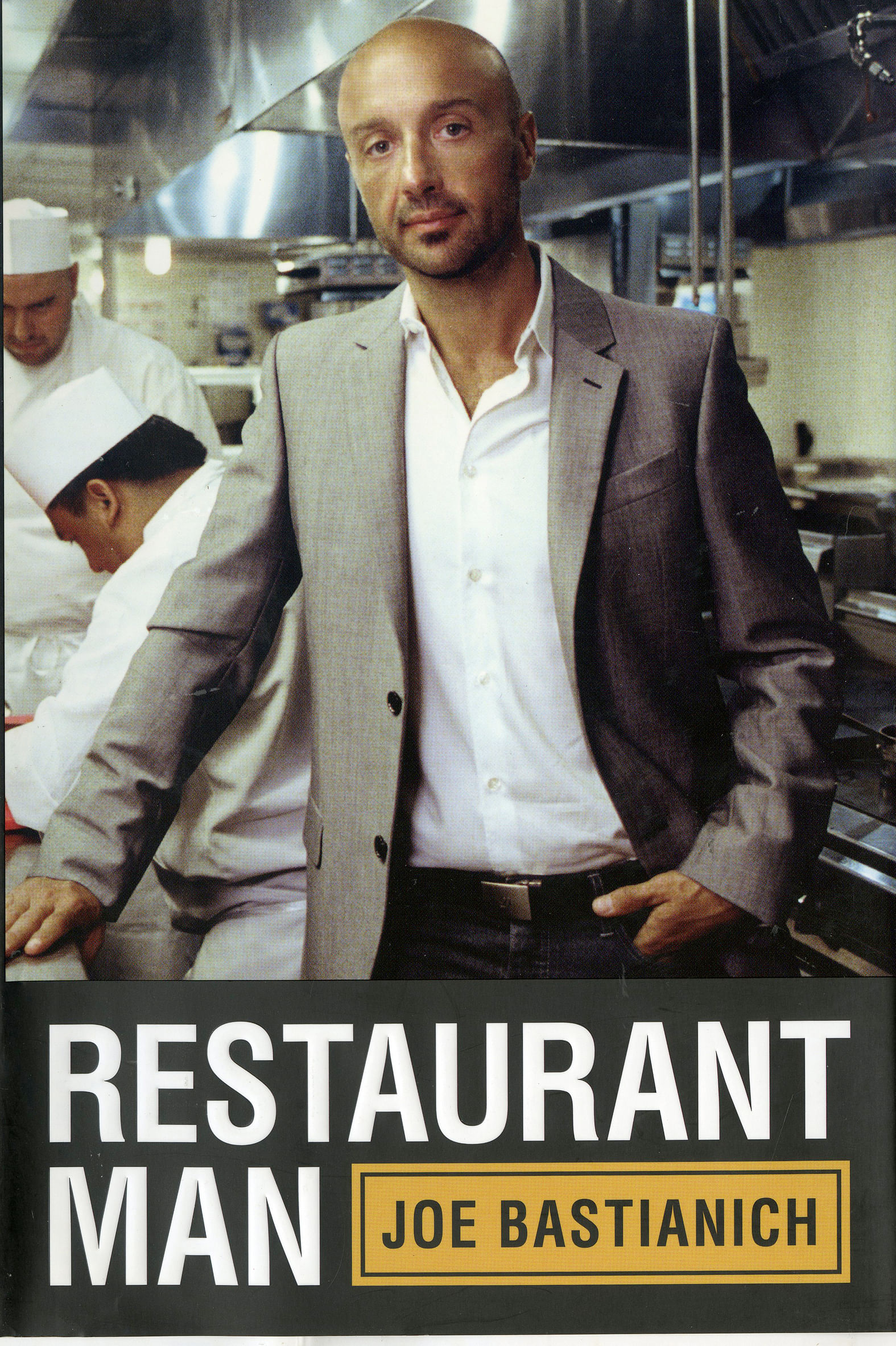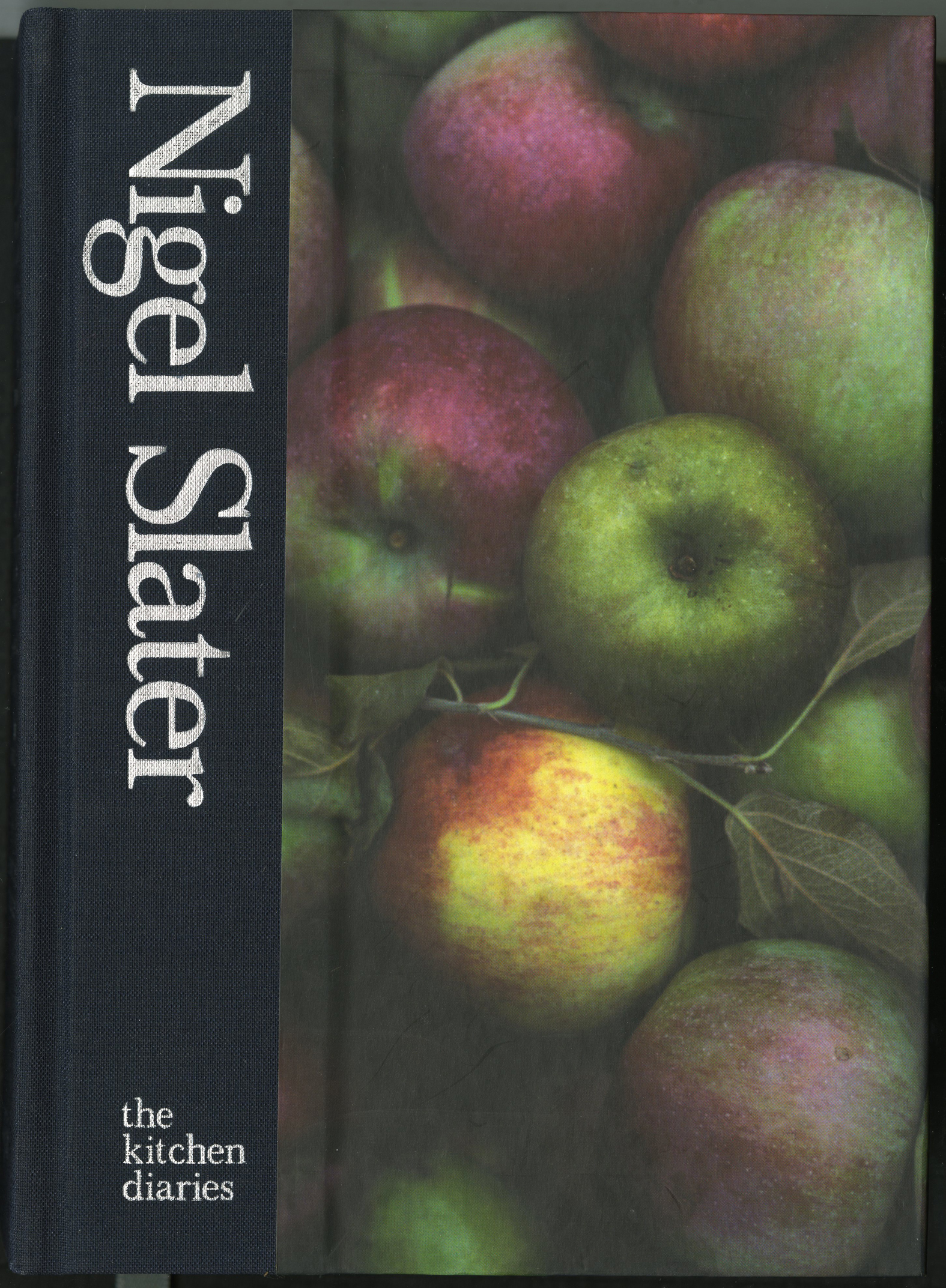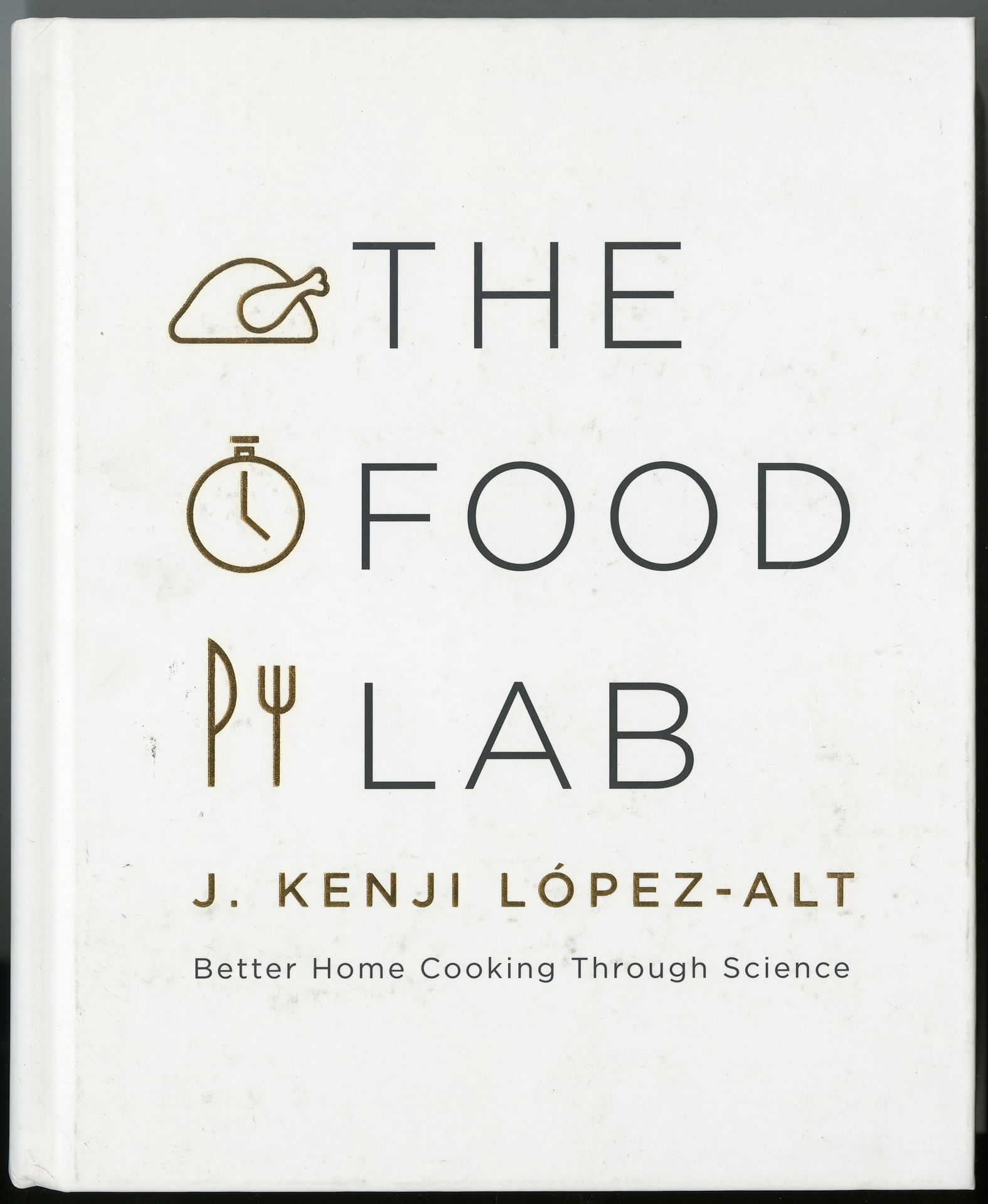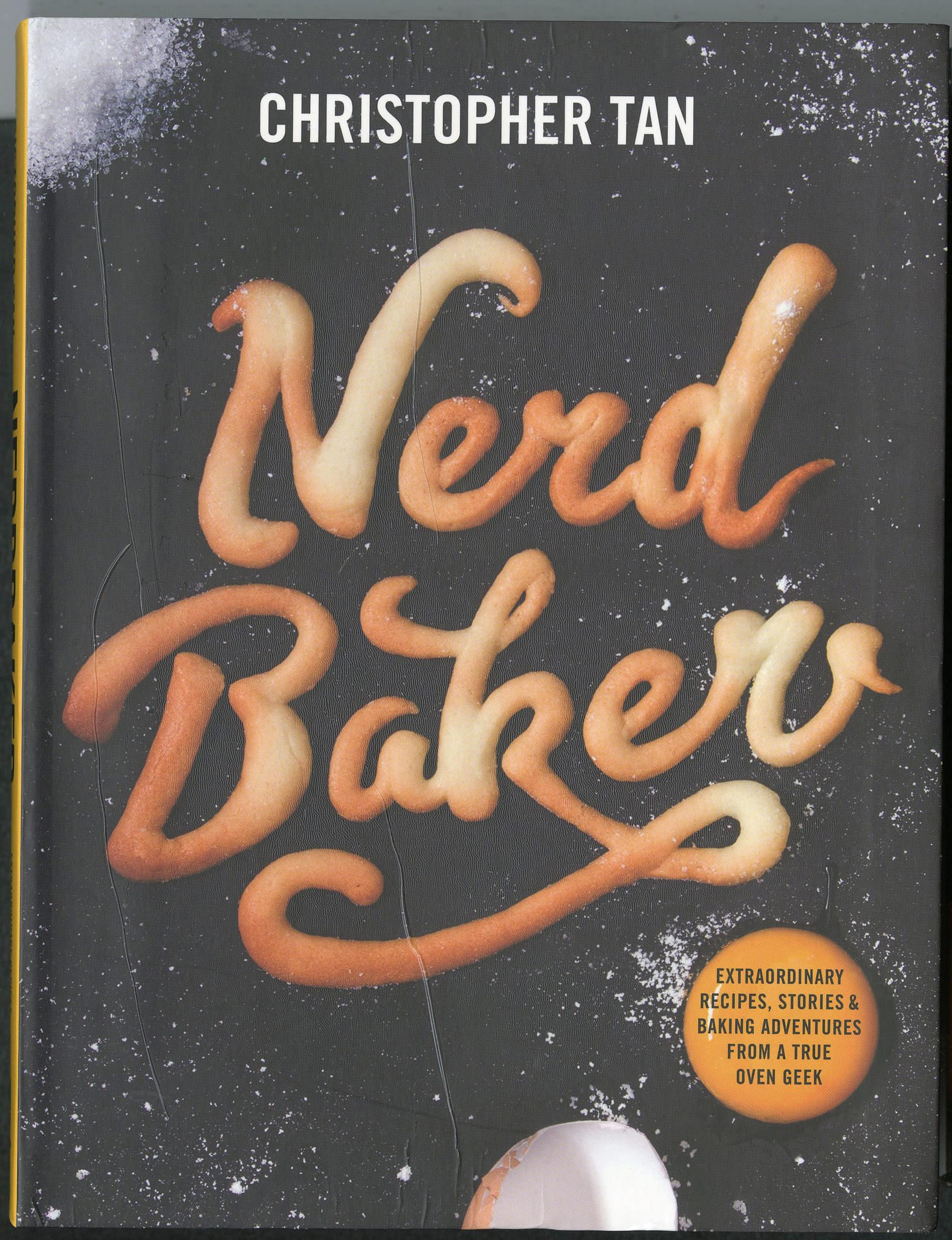Trying to come up with a list of 10 best food books is well-nigh impossible, when my shelves are overflowing with contenders.
Ever since my aunt gave me my first cookbook, by British food writer Marguerite Patten, I have been hooked on them.
There is no more room for books in my home, but I continue to buy them. Because of space constraints, I have to be a lot more judicious.
Books by restaurant chefs are nice to have, but mostly impossible to cook from, so I get them only if I think the chef has something interesting to say. I have no patience, budget or space for vanity projects.
What I am looking for are books written with passion and verve, with recipes that have been tested and which work.
If the book is about a particular cuisine, it has to deepen my knowledge of it and offer recipes that are authentic.
Many of the books on my list contain recipes, but not all of them do. They are equally important because they mark milestones in the development of food culture, relate to my job or simply make good reading on a lazy Sunday afternoon.

BEARD ON BREAD
By James Beard
Knopf/Paperback/256 pages/US$12.20/ www.amazon.com
This sounds a little dramatic, but James Beard saved my sanity.
It was the early 1990s, and I was a rookie reporter grappling with the demands of a job that stressed and thrilled me in equal measure. On weekends, I worked my way through this book.
It guided me through the fundamentals of making bread by hand without the need for fancy equipment I could not afford.
The kneading and the punching down of dough helped rid me of angst from work. Warm, aromatic loaves which came out of the oven afterwards, when I was feeling more mellow after the workout, were the best reward.
Anyone who has ever wanted to make bread but was unsure about handling yeast and such should start with Beard On Bread. Like the best recipe writers, Beard, a tireless champion of American cooking, writes clearly and unambiguously, guiding the novice with a sure hand.
His sandwich loaf recipe is a good place to start and I remember the feeling of accomplishment when I cut myself a slice. Other good ones include Jane Grigson's Walnut Bread From Southern Burgundy and Brioche Bread, which makes wonderful toast.
The book was first published in 1973 and how things have changed. Home cooks now turn out professional loaves using sourdough starters they feed like pets and their breads are baked in steaminjected ovens which ensure maximum crustiness.
My bread-making is more infrequent now and I have grown to love making No Knead Bread from New York's Sullivan Street Bakery.
But there is nothing quite like kneading dough by hand, turning a shaggy ball into a smooth one that springs back to the touch. It's old school but very satisfying.


MASTERING THE ART OF FRENCH COOKING VOLUMES 1 & 2
By Julia Child, Louisette Bertholle and Simone Beck (Volume 1); Julia Child and Simone Beck (Volume 2)
Knopf/Hardback/US$59.78 for a two-volume set/ www.amazon.com
When in university in the United States, I would wake up early on Saturday mornings to watch cooking shows on PBS, the Public Broadcasting Service.
And there was legendary cookbook author Julia Child in re-runs of her show, cooking complicated French dishes with ease and a lot of humour.
Naturally, I ran out and bought her first two books, Mastering The Art Of French Cooking Volumes 1 & 2 and started cooking from them.
The books, published in 1961 and 1970, changed the way Americans looked at French food.
They had the confidence to make these exotic dishes from scratch at home, with Child as their guide. She had a gift for writing perfectly clear instructions that also reflected her can-do energy.
Her Mushroom Soup recipe was the one I tried first and when it turned out perfectly, I moved on to Creme Renversee Au Caramel or Caramel Custard, which became my foolproof, default dessert for years.
Another great recipe is Gratin De Pommes De Terre Aux Anchois or Gratin Of Potatoes, Onions And Anchovies.
Then the movie Julie & Julia came out in 2009, splicing together two stories: one of American blogger Julie Powell as she cooked through every recipe in Child's book and the other of Child's struggle to get the first book published.
I dug out my books and made Boeuf Bourguignon, an elaborate beef stew that required multiple shopping trips, two days and much gnashing of teeth. The end result was so perfect that I felt a little emotional.
Thinking of going to cooking school? Try cooking from these books. You get a great education from them.

RESTAURANT MAN
By Joe Bastianich
Viking/Hardback/288 pages/US$17.69/ www.amazon.com
His television persona, on the American version of the cooking competition MasterChef, is brash and intimidating. Restaurateur Joe Bastianich has perfected the dead-eye stare, which he trains on contestants who dare to present bad food.
But his comments have always struck me as being more constructive than those of the flashier bad- boy chef Gordon Ramsay, also a judge on the show.
Bastianich has his eye on the bottom line at all times and that comes from being, along with his mother Lidia Bastianich and chef Mario Batali, the owner of an international restaurant empire.
They own or operate about 30 restaurants, including Del Posto in New York and Pizzeria and Osteria Mozza in Los Angeles and Singapore.
His 2012 book is a clear-eyed, bull****-free examination of the industry he grew up in.
The tone of the book is all machismo and it begins with a mathematics lesson in opening and operating a restaurant.
If there is one thing to take away from reading the book, it is this pungent quote: "You have to appear to be generous, but you have to be inherently a cheap f*** to make it work."
This lesson, which he learnt from his restaurateur father, has stood him in good stead, although he and Batali had to pay US$5.25 million to employees after a 2010 lawsuit, which accused them of skimming tips to boost their profits.
Evidently, to be a Restaurant Man, you also have to be a hustler.
This book is required reading for anyone with stars in their eyes and grand plans to open a restaurant. Many of the lessons apply to Singapore, with its high manpower, food and rental costs.
If reading this stops you in your tracks, be grateful. It is a jungle out there and when the animals bite, they draw blood.

GARLIC AND SAPPHIRES
By Ruth Reichl
Penguin Group USA/Paperback/333 pages/$29.68/ https://singapore.kinokuniya.com
This 2005 book by Ruth Reichl, who was the New York Times restaurant critic from 1993 to 1999, is a must-read for anyone who wants to write about food seriously.
In many ways, The New York Times' restaurant critic has one of the most powerful jobs in the paper and in the city. He or she has the power to make or break a restaurant. People from around the world rely on those reviews to figure out where to eat in The Big Apple.
Reichl was a breath of fresh air, reviewing restaurants that her predecessors, who seemed to prefer formal (read stuffy) establishments, would never contemplate stepping into.
She gave what she calls "ethnic cuisine" its due, reviewing Chinese, Japanese and Korean restaurants. When she gave soba restaurant Honmura An three stars, wags were predicting that she would never last.
Her legacy has lasted - the restaurants reviewed by the paper reflect much more diversity.
Because the restaurant critic's job is so important, the paper has to pull every known photo of a newly announced restaurant critic from social media and the Internet.
Restaurant owners go to great lengths to track down fuzzy photos to tack on kitchen walls, to foil any attempts by the critics to dine anonymously.
Reichl used a range of disguises and in her review of Le Cirque, she writes about how everything changed when the owner finally recognised her after five meals over five months: "An avalanche of sweets descended upon the table and I was fascinated to note that the raspberries on the new desserts were three times the size of those on the old ones."
She reproduces some of the reviews, but it is the back stories that are the best reasons to read the book.
What emerges from all the tussling with editors, the creating of new disguises and the dealing with irate restaurateurs is the importance of being fearless.

KITCHEN CONFIDENTIAL
By Anthony Bourdain
Ecco/Paperback/312 pages/US$10.17/ www.amazon.com
In 2000, when this book was published, chefs were enjoying rock star status.
They were profiled in magazines, invited to glamourous parties, paid to endorse products and wrote glossy cookbooks. Chefs were the new celebrities, shiny and bright.
Along came Anthony Bourdain, at the time executive chef of Brasserie Les Halles in New York. He stripped off that veneer to reveal the real workings of restaurant kitchens: the grunt work, the swearing, the burns, the fisticuffs, the drugs and the hurried sex on top of sacks of onions.
He became a celebrity after the book shot up the bestsellers list, quit his job and became a TV star, hosting his own food and travel shows.
The chef, who attended Vassar, wrote other books, but none of them match the rawness and honesty of Kitchen Confidential.
Like Joe Bastianich, he talks about the sums that make a restaurant work, but there is plenty for diners here too.
He was among the first to talk about how restaurants treat guests who want their steaks well-done, how the "specials" on the menu are made with ingredients the kitchen has to use up before they go bad and why fish on Mondays is a bad idea.
Kitchen Confidential unleashed a dam and soon, chefs, servers and restaurateurs were putting out no-holds-barred books about the gritty restaurant world.
In a strange twist, Bourdain, a former drug addict who writes so eloquently about the "culinary underbelly", is now worlds away from it.
He no longer toils in a hot kitchen, does not have to worry about money and lives on the Upper East Side in Manhattan.
Not bad for someone who used to supervise the making of steak frites.

THE KITCHEN DIARIES
By Nigel Slater
Fourth Estate/Hardback/400 pages/$70.24/ https://singapore.kinokuniya.com
Although I have pretty much every book that British cookbook author Nigel Slater has written, this is the one I cook from most often.
I suppose living in the tropics, where there are only two seasons, hot and hotter, makes me yearn for spring, summer, autumn and winter, and the different food people eat at different times of the year.
There are many British cookbook authors whose books I treasure, among them Delia Smith (until she lost the plot with 2008's Delia's How To Cheat At Cooking), Jane Grigson, Simon Hopkinson and Fergus Henderson, but I am drawn to Slater's books because he makes cooking seem like a pleasure.
Instead of exhorting home cooks to turn out complicated dishes by performing kitchen gymnastics, he gives do-able recipes which do not require special equipment, but which always taste good.
The book is written like a diary in which he details what he cooks through the course of a year.
On Dec 17, it is: "Chicken thighs tonight, roasted with olive oil, a little butter and roughly chopped lemons. They sing and sizzle as they come from the oven, filling the house with the scent of hot, crisp chicken skin with the sharp edge of citrus."
Reading the book is almost as much of a pleasure as cooking from it and that is what I look for in a cookbook. It must never just be a collection of recipes, although those for A Wonderfully Moist, Fresh Plum Cake and My Very Good Chocolate Brownie Recipe are good to have.

THE FOOD LAB
By J. Kenji Lopez-Alt
W W Norton & Co Inc/Hardback/958 pages/$89.40/ https://singapore.kinokuniya.com
I started noticing J. Kenji Lopez-Alt's byline in Cook's Illustrated, an ad-free cooking magazine that goes to great length to test, re-test and find the best ways of cooking mostly American comfort food.
Lopez-Alt, who was a professional chef for 11 years before the magazine gig, continues his food nerd career as managing culinary director of the food blog, Serious Eats.
On it, he writes The Food Lab column, where he unleashes science on home cooking.
He is careful to tread the line between making that science relevant to the home cook and nerding out so much that he loses his readers.
The comprehensive tome is designed to appeal to different audiences. These might range from people who are starting to cook and want some direction, to novices who want to get better, to competent home cooks looking to do more ambitious things in the kitchen.
It is difficult to replicate the clarity of a Julia Child recipe, but Lopez-Alt tries his darndest and mostly succeeds.
The attraction for me is the science behind why using certain techniques and ingredients can result in a better dish.
I have used vodka in tempura batter to great effect and in this book, he explains the science behind it. He is also not above using Marmite, the yeast extract, to deepen the flavour of some dishes.
Even non food nerds will get plenty out of the book.
If you are going to take the trouble to cook at home, why not read up ways to do it better?

HEAT
By Bill Buford
Vintage Books/Paperback/318 pages/$28.90/ https://singapore.kinokuniya.com
If Anthony Bourdain launched a slew of books written by restaurant industry insiders, then Bill Buford's 2006 book captures the start of another trend - that of serious home cooks who reach beyond their domestic stoves to go hang out with the pros.
The founding editor of literary magazine Granta and a writer with The New Yorker quits his job at age 52 to, among other things, work in the kitchen of one of chef Mario Batali's restaurants, learn to make pasta in Porretta in Italy, and learn the art of butchery with Dante-quoting, larger-than-life Dario Cecchini in Tuscany.
Re-reading the book, I still find the fanboy worship of Batali a complete turn-off, but ignore that, and Buford taps into what a lot of food-mad people yearn to do: benchmark themselves against professionals.
The honest depiction of work and life in a professional kitchen will either galvanise those with dreams to work in a restaurant or put them off completely. It is hard work and he messes up frequently.
But I get a buzz from his triumphs and start to root for him as he works to perfect the art of making pasta, and tries to understand Cecchini, who, I am sure, messes with Buford's mind just for fun.
Some readers will, at the end of the book, wonder why he bothers. Surely some things should be left to the experts?
Judging from what home cooks are doing these days, there are many others who are not put off. They bake bread like the pros do, attend butchery classes, make their own pasta, brew their own beer and turn file cabinets into smokers for barbecue.
And who knew, back in the day, that sous vide machines, once found only in restaurant kitchens, would be pretty standard in some homes today?

NERD BAKER
By Christopher Tan
Epigram Books/Paperback/271 pages/$48.04/ Books Kinokuniya
In the foreword to Nerd Baker, James Oseland, former editor of American food magazine Saveur, calls Christopher Tan a "food whisperer" and it is the perfect description.
I have worked with him on columns in this paper and his encyclopaedic knowledge of food is astounding. I have attended his cooking classes and marvelled at how well the recipes work when I tried them out at home. Because of him, I can make Japanese souffle cheese cake.
Published last year, this book is one of the best Singapore cookbooks published in the last couple of years. We are so used to badly written ones that do not follow international conventions for recipe writing, badly designed ones with too much white space and tiny font, and books with recipes that just do not work.
This book, filled with photos and anecdotes from his travels, bucks the trend and delivers in spades, because he is a serious baker who can also communicate methods and techniques clearly.
Start with Chris' Hot Rolls because they are easy and delicious slathered with butter. Softly-Softly Chocolate Cake is another winner.
I have flagged Spam And Pineapple Upside-Down Cornbread Cake, Chiang Mai Sausage Roll and Chocolate Matcha Macaron Tart for future endeavours.
This is a keeper of a book, but more importantly, it raises the bar for all Singapore cookbooks.
Kudos to Tan for this monumental effort and to Epigram for devoting the resources to it.

HARUMI'S JAPANESE COOKING
By Harumi Kurihara
Hp Books/Hardback/159 pages/$48.15/ https://singapore.kinokuniya.com
Because I love every aspect of the cuisine, I have a disproportionately large collection of Japanese books on food. There are those about Edomae-style sushi, a dictionary listing the types of fish used in sushi, books about Japanese green tea and other esoteric topics.
The ones I keep turning to, however, are those with no-nonsense recipes for the type of dishes that regular Japanese people cook and eat at home.
A Japanese friend of mine always laughs when he looks at the list of restaurants I put together for my yearly trips to Tokyo. He says they do not reflect the way Japanese people eat day to day.
A good way to stay grounded is to cook from Harumi Kurihara's books. Harumi's Japanese Cooking is her first one in English and my copies of her subsequent books, Harumi's Japanese Home Cooking and Everyday Harumi, are well used too.
So is Elizabeth Andoh's Washoku, which gives precise directions for cooking Japanese rice, dashi and other foundations of the cuisine. I rely on it heavily, but find Kurihara's tone and recipes a lot more fun.
In the United States, she is marketed as Japan's Martha Stewart but well, let's just say Kurihara's recipes actually work. Those I have used again and again include Steamed Chicken Salad With Sesame Sauce, Simmered Pork and Steak Marinated In Two Kinds Of Miso.
Where Andoh strives for correctness in every element of a dish, Kurihara is comfortable with bending some rules a little, to put food on the table without too much fuss and without being precious.
Is this what my Japanese friend is trying to get at when critiquing my Tokyo restaurant lists?


